Kinmen Islands: Taiwan's frontline with China
Just a few miles off the mainland, the Kinmen Islands could be attacked first if China invades Taiwan
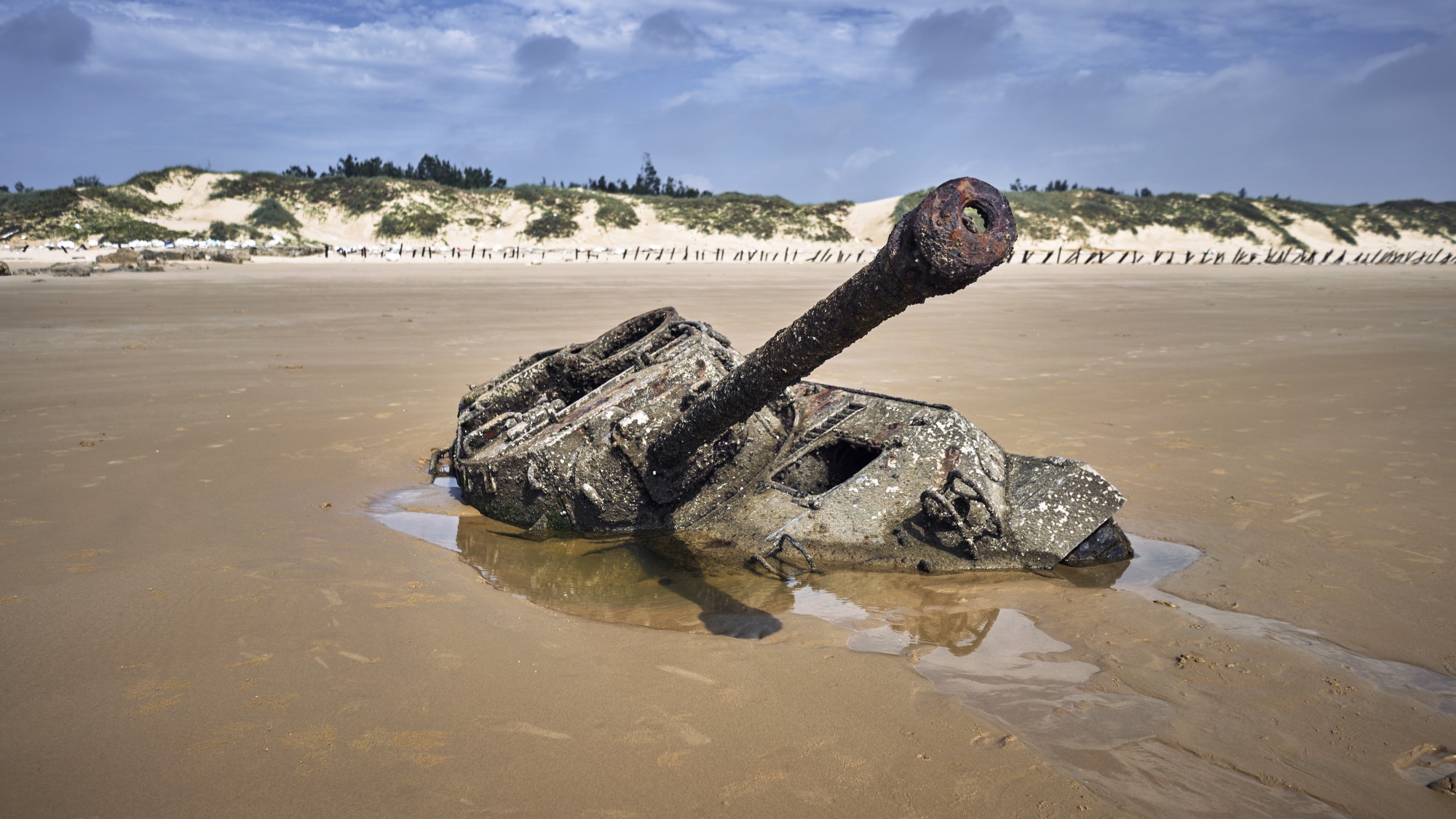
This article originally appeared in History of War magazine issue 138.
The Kinmen Islands is a small Taiwanese territory located a few miles off the coast of mainland China, in Xiamen Bay. The largest island is encircled by a sandy shoreline and studded by rocks. The island is 93 miles (150km) away from the Taiwan main island (formerly called Formosa), but being so close to the Fujian coast of mainland China it has historically been within range of communist artillery batteries and surveillance.
The close proximity of the Kinmen Islands to mainland China has placed it on the frontline of several conflicts between the People's Republic and the Republic of China, meaning it could be the target of any future Chinese invasion of Taiwan.
The Week
Escape your echo chamber. Get the facts behind the news, plus analysis from multiple perspectives.

Sign up for The Week's Free Newsletters
From our morning news briefing to a weekly Good News Newsletter, get the best of The Week delivered directly to your inbox.
From our morning news briefing to a weekly Good News Newsletter, get the best of The Week delivered directly to your inbox.
First attack on the Kinmen Islands
In 1949, Republic of China leader Chiang Kai-shek retreated his forces to the island of Formosa (the Chinese name Taiwan was rarely used at this time) after being forced to withdraw from the mainland by the communist offensive.
The defence of Formosa required a perimeter in the form of the offshore islands. Most precarious among these was the fishing community that inhabited Quemoy, or Kinmen.
Since 1948 the reeling Nationalists planned, albeit in haphazard fashion, on withdrawing from the mainland and to scatter their army's veteran divisions among China's coastal or offshore islands. By April the following year it was reported that nearly two million Nationalist soldiers and civilians had evacuated to Formosa.
When the new Communist rulers in Peking (Beijing) declared the People's Republic in October 1949, Mao Zedong was determined to quash every last vestige of the defeated Kuomintang (KMT).
A free daily email with the biggest news stories of the day – and the best features from TheWeek.com
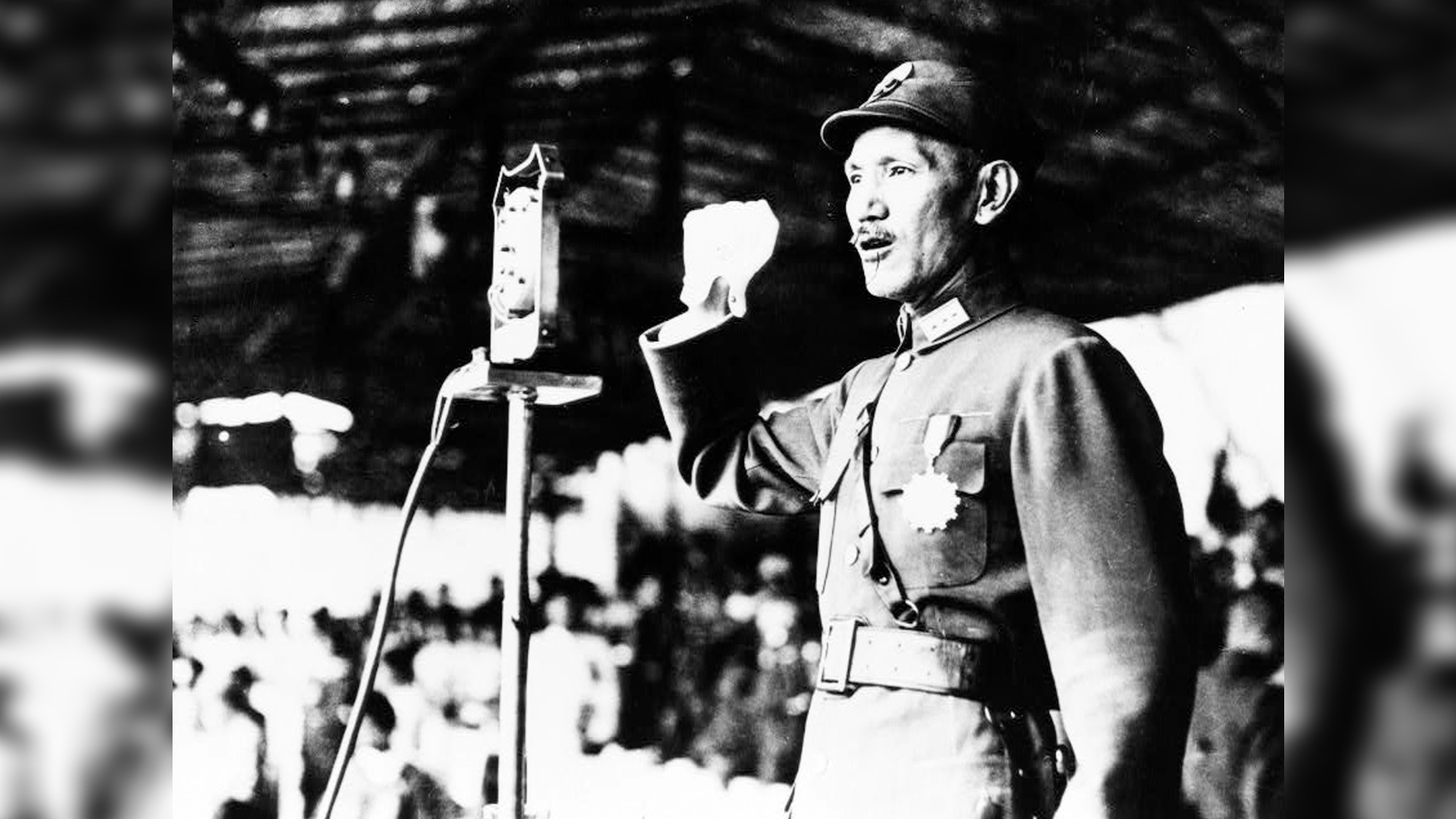
Republic of China leader Chiang Kai-shek addresses officer training corps at Hankou in 1940
With its ranks numbering in the millions, the People's Liberation Army had its orders and remained on the offensive. The Battle of Guningtou on Kinmen spanned the last weeks of October and was underway once communist troops had occupied Xiamen, the island barely 2.5 miles (4km) from Kinmen.
On 22 October it was believed at least two infantry divisions were prepared for a crossing. By the reckoning of the nationalists this force numbered at least 20,000 Communist soldiers. The amphibious operation was underway from 24 October unpredictable fighting lasted until 28 October.
Contrary to the myth of their limited skill at naval warfare, the Communists reached the shore unopposed and assaulted a spit of rock-strewn beach on the island's northern shore: this was Guningtou.
How the battle unfolded on the first day is poorly recorded, although it's known that the nationalists were caught by surprise and initially put up a feeble defence with just machine guns. The communists took appalling losses but, undeterred, moved inland on foot. The close-quarters fighting dragged on until the next day, when artillery from the Chinese coast hammered the defending KMT troops.
Less is known about the communist forces than the nationalists, who were led by trusted veterans of the KMT armed forces such as Chiang Wei-kuo, the adopted son of the dictator Chiang Kai-shek. As an officer in the Nationalist army who had trained in Germany and commanded a tank unit, he utilised what little armour could be mustered to scatter the Communists.
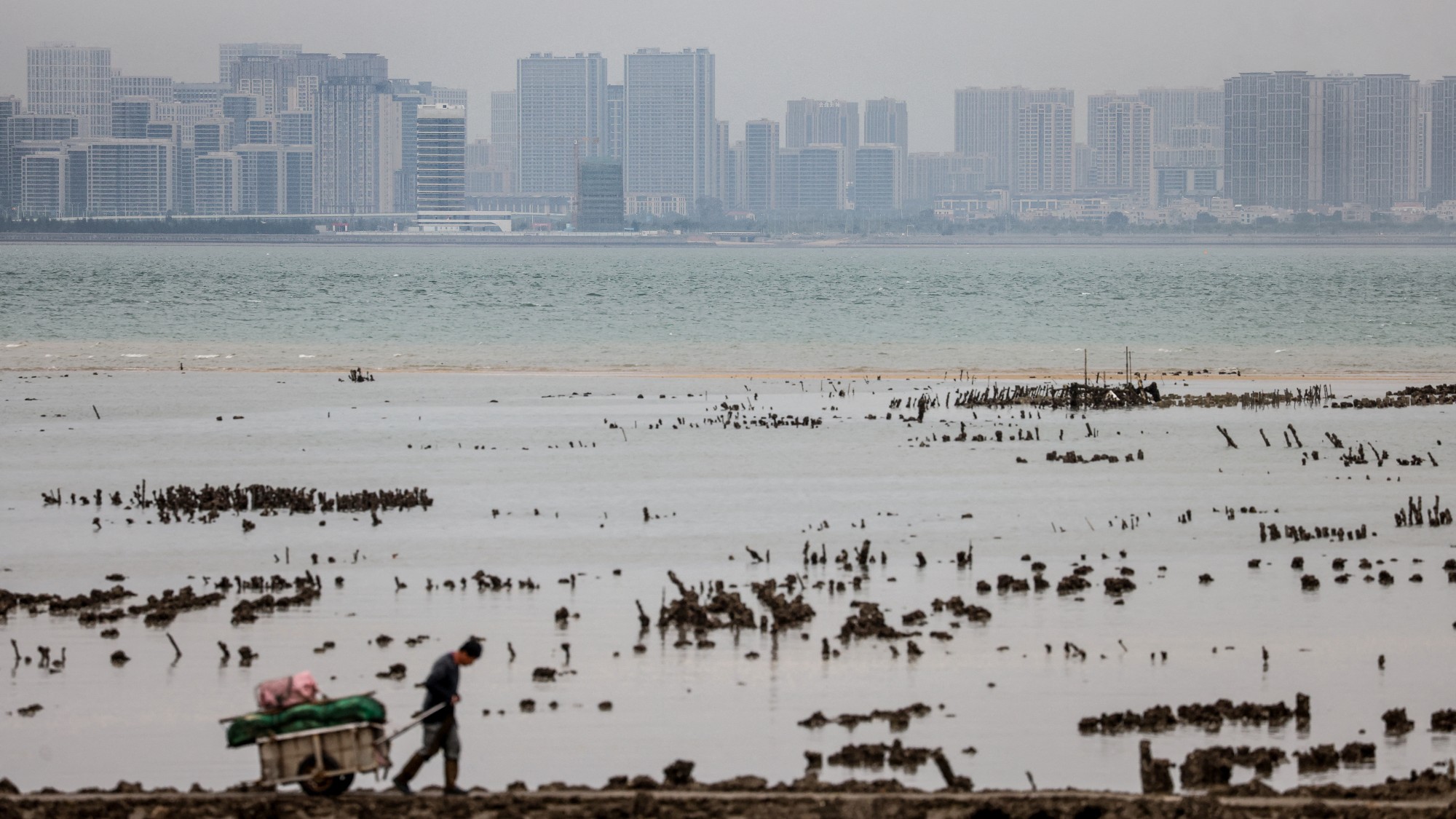
An oyster farmer pulls a cart near Guningtou village in Kinmen, with Xiamen in the background
Another stalwart who joined the battle was no less than General Hu Lien, who had served the KMT since the 1930s and had arrived on the second day of hostilities. Communist troops had almost overrun the village of Guningtou and were halted by the timely appearance of Lien's 12th Brigade.
The balance of manpower between the communists and nationalists at Guningtou makes for a baffling assessment as both sides had troops to spare. What decided the outcome were tanks and bomber aircraft, neither of which the Communists could bring to the theatre.
In the case of the nationalists these were outdated American-made M5A1 Stuart tanks commanded by Chiang Wei-kuo. Even Wei-kuo's half brother, Chiang Ching-kuo, had a role in the fighting, although this was obscured for the sake of his political career. Having spent his formative years in the Soviet Union as a de facto hostage, he returned to China with a Russian wife and was given a suitable rank in the army.
To their credit the Chiang brothers had a profound influence preparing the offshore islands against fresh invasion attempts and the work continued after 1951 when American advisers were embedded with Nationalist units.
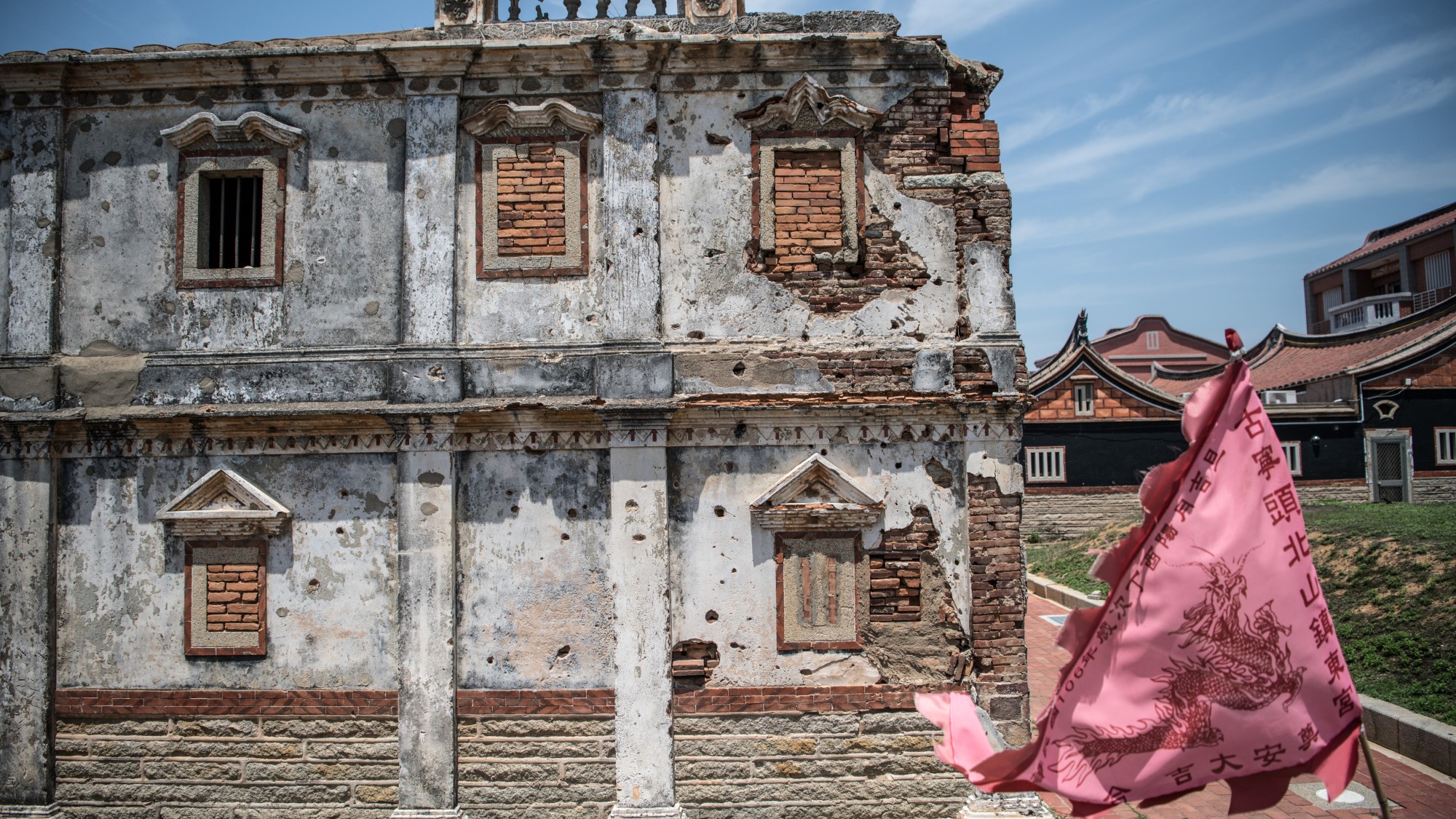
A building on Kinmen still bears bullet holes and damage from the Battle of Guningtou
According to Taiwanese accounts the Battle of Guningtou lasted 56 hours. Both sides suffered appalling losses, with the communists coming off worse; their entire invasion force was decimated and some 10,000 stragglers surrendered.
The nationalists' remaining light bombers, flying in from airstrips 60 miles (100km) away, helped scatter the enemy and prevent their evacuation attempts.
For decades this attempted communist landing, memorialised by the KMT regime in Taiwan, was ignored by the Western press and only considered a smaller clash in the long struggle for Kinmen and the offshore islands.
When it was finally immortalised by Taiwan's press as a lasting victory against communism it served to bookend the defeat suffered in the mainland and raise a new 'origin story' for local heroism against invasion. It was a narrative that was acceptable for a Taiwanese citizenry fed with constant warnings about the mainland's designs on their way of life.
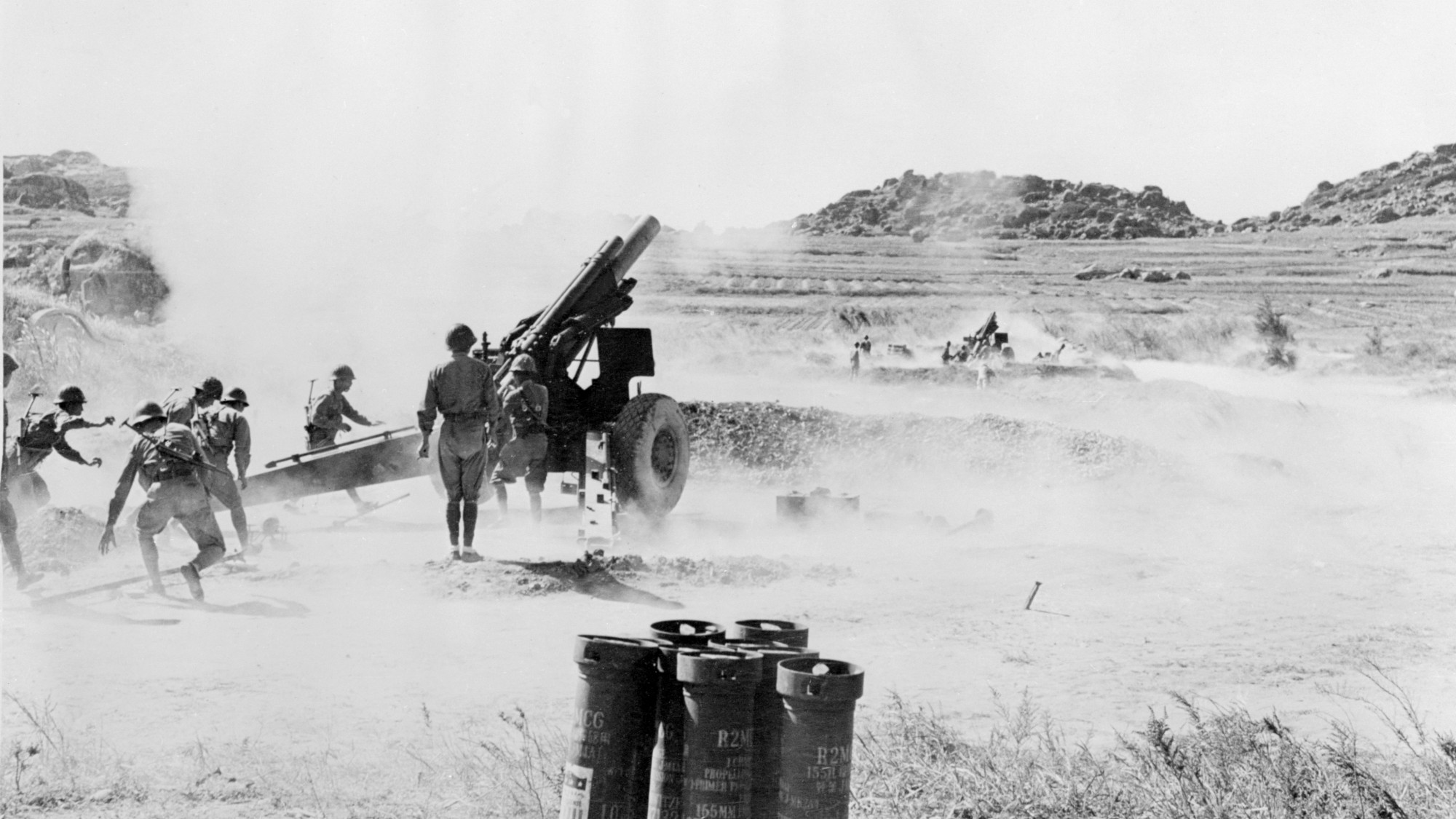
Chinese nationalist artillery blast communist-held positions from Kinmen island
American intervention
During the 1950s the Taiwan Strait became the Cold War's deadliest flashpoint and a potential theatre for a nuclear showdown. Since 1949, when the Kuomintang (KMT) retreated to Formosa (Taiwan) and other offshore islands, the communists in Beijing slowly overwhelmed these garrisons. The greatest prize was the capture of sprawling Hainan in 1950 just months before one million Chinese troops, dubbed 'people's volunteers', attacked UN forces in Korea.
By 1951 President Harry S Truman's administration pivoted back to supporting the KMT after its abandonment in the late 1940s. The cherry on top was assigning the U.S. Navy's 7th Fleet to sail its aircraft carriers across the strait separating the main island of Formosa from the Chinese coast, which effectively blocked any invasion attempt.
The Truman administration, then the Dwight D. Eisenhower administration later on, maintained a pro-KMT stance with the caveat that fighting would not embroil U.S. air and naval assets in Japan and the Philippines. But this is exactly what happened in the final months of 1954 when Beijing moved its forces from Korea to the coastal southern provinces.
The rationale from their perspective was clear: since 1949 KMT-backed 'guerrillas' – smuggling rings in the offshore islands such as Kinmen – had been blockading China's port cities. The People's Liberation Army (PLA) struck on 5 September with a bombardment of Formosa's island chain: the Kinmen and Matsu clusters. The Dachen, or Tachen Islands, located some 250 miles (400km) from the Taiwan coast, were pummelled into submission.
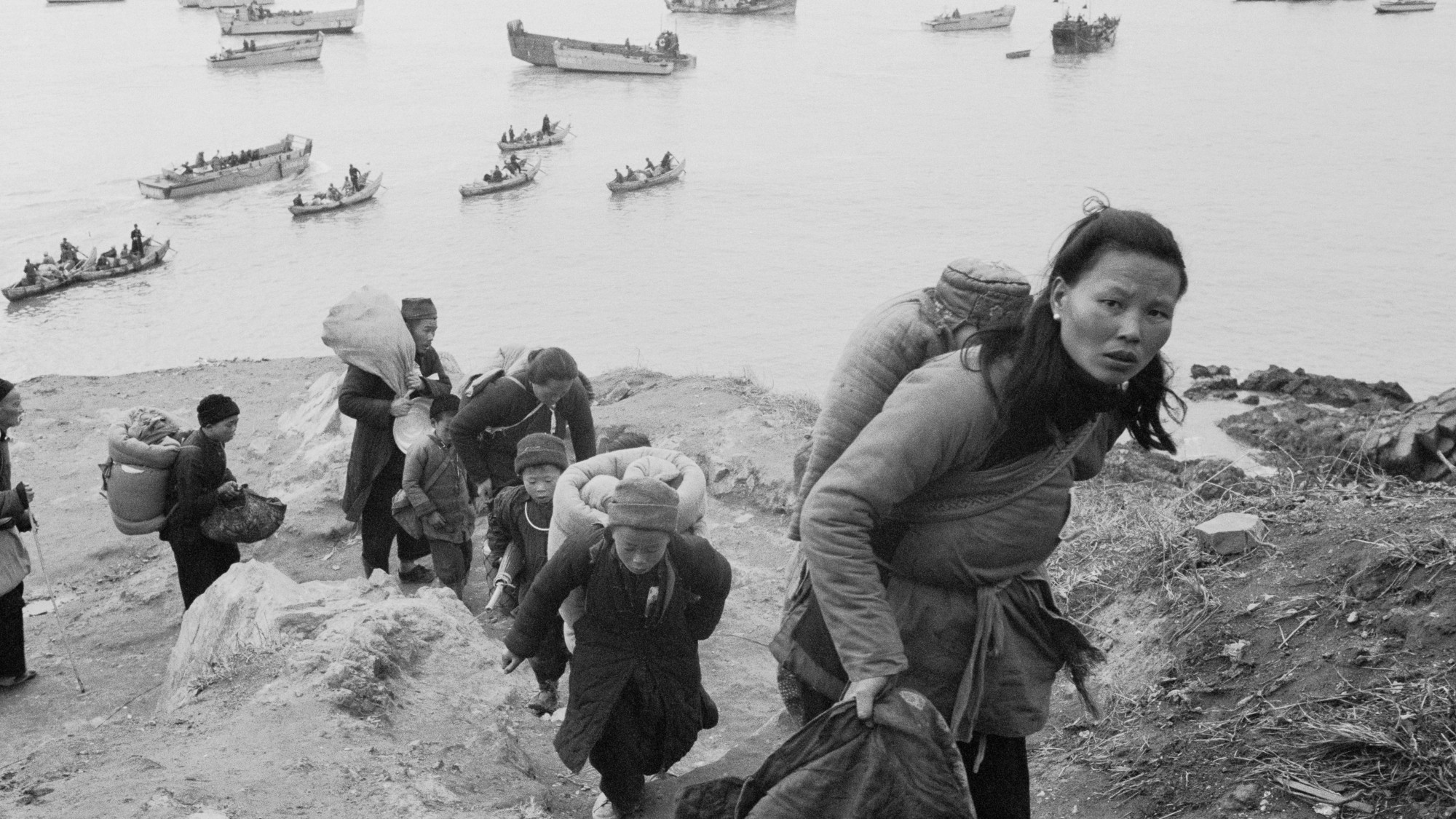
Refugees being evacuated by U.S. forces from the Dachen, or Tachen Islands, move to their embarkation point
By January 1955 dozens of U.S. Navy ships organised as Task Force 502 evacuated 30,000 soldiers and civilians from the Dachens in the most brazen American intervention yet. The risk of a crossing by PLA divisions on boats panicked Taipei and the ageing Chiang Kai-shek wanted immediate American reinforcements.
A subtler approach prevailed. In a matter of weeks the superior air and naval resources of the U.S. military reinforced the Kinmen garrison with fresh artillery rounds for 6.1in (155mm) M1 Long Tom and M114 howitzers. A rare gift of the U.S. Army to their Formosan allies were divisional 8in (203mm) howitzers that had the range for hitting mainland China if they were positioned in concrete forts on the Matsus.
Over the years hundreds of U.S. advisers under the Military Assistance Advisory Group (MAAG) relocated to Taiwan. The risk to Americans embedded with KMT command staff meant there had to be strict guidelines on decision-making, so the Eisenhower administration wrung a promise from Chiang Kai-shek: there would be no attempts at a counter-invasion on the mainland in order to avoid starting World War III.
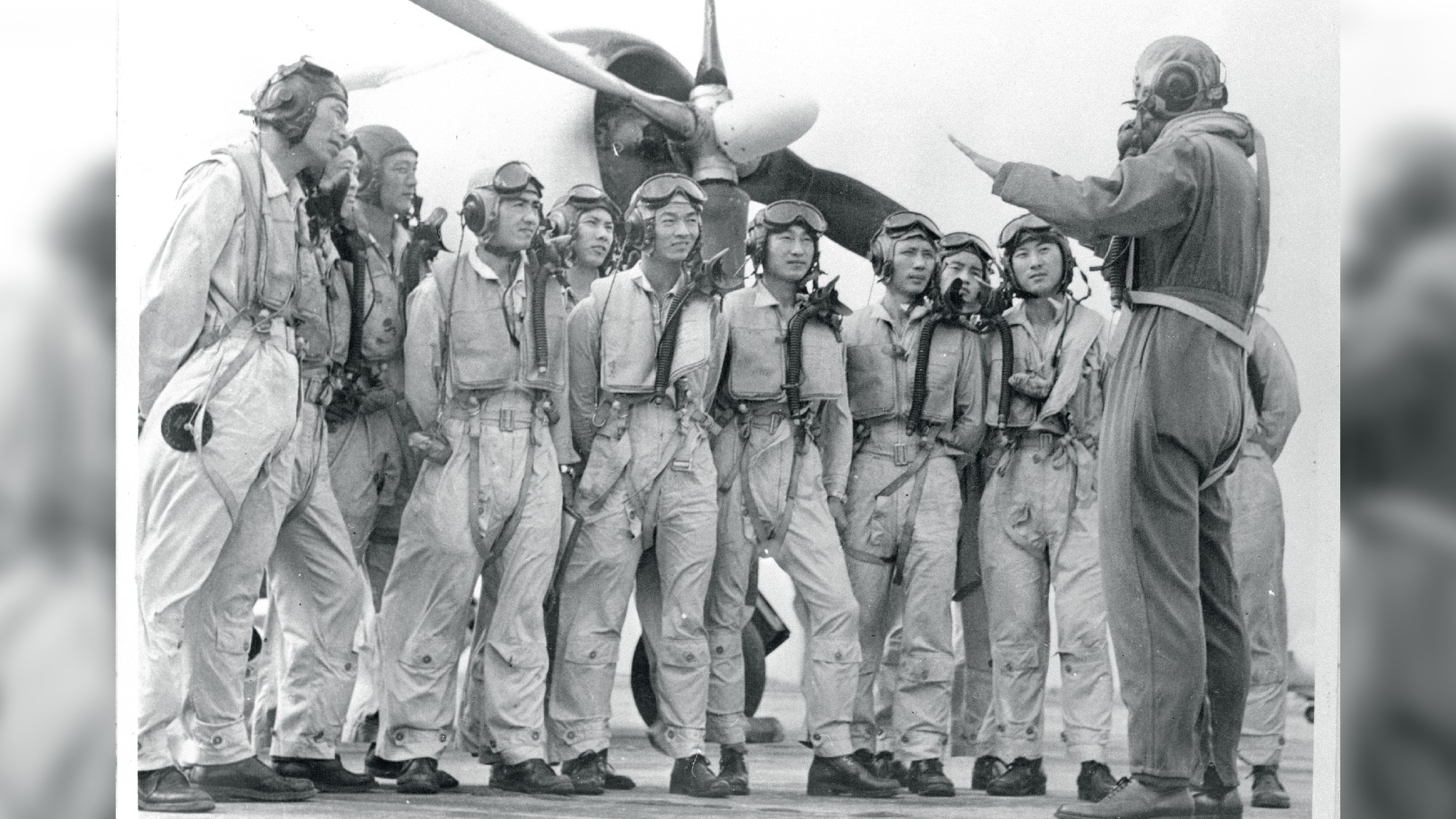
Chinese nationalist pilots receive a final briefing before taking off in U.S.-supplied planes to cover the evacuation of Tachen Island
What became the First Taiwan Strait Crisis (1954-55) was portrayed by the global press as a high-risk skirmish that ebbed as a result of decisive American intervention. But neither Taipei or Beijing de-escalated in the ensuing years. Both sides grew their militaries, with the KMT fielding between 400,000 to 600,000 troops in its army, including airborne and marine units patterned after their American equivalents.
The remaining offshore islands, Kinmen and the tiny Matsu cluster, were reinforced with tunnel complexes and artillery. Constant surveillance and close calls with enemy aircraft were ever-present. A Mutual Defence Treaty and other obligations allowed the U.S. to deliver hundreds of brand new aircraft, including jets, to Taiwan's Republic of China Air Force.
By the summer of 1958 the intelligence from the Chinese coast set Taipei and Washington, D.C. on edge. The PLA was assessed to have collected almost 200,000 troops and hundreds of artillery pieces in Fujian for an upcoming operation. Its navy had grown by leaps and bounds with new gunboats armed with torpedoes.
Even more troubling was the rise of its air force, with 1,000 new Soviet fighters – the MiG-15 and MiG-17 – and the Ilyushin-28 medium-range bomber. Matters got out of hand once again on 23 August 1958 when coastal batteries hammered Kinmen with 40,000 shells inside 24 hours.
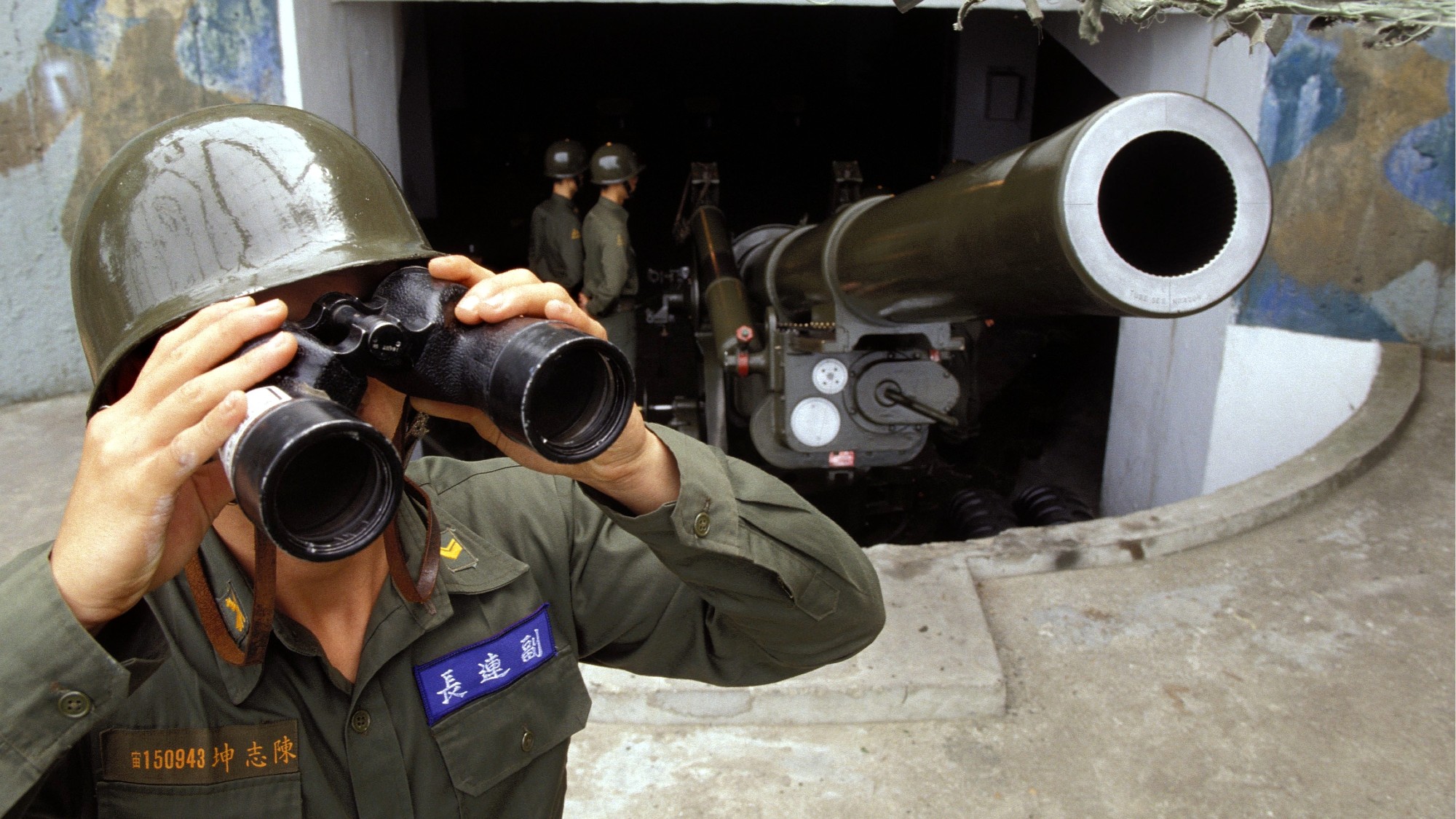
Taiwanese troops keep watch on Kinmen in June 1995
A shaken and injured Defence Minister Yu Ta-wei returned from Kinmen and met with the international press to make Taiwan's case: Beijing was ready to launch a full-scale assault. The 7th Fleet performed its usual mission reinforcing the islands while the ROC Air Force tangled with its rival on the mainland using air-to-air missiles. This time around the pinnacle of U.S. military technology was lavished on Taiwan.
The non-stop shelling of the Kinmen islands lasted 44 days, with the 7th Fleet taking pains to avoid getting within howitzer range as it escorted the resupply missions, while the sky buzzed with Taiwanese Saber jets. Aerial clashes with Chinese MiGs began at the start of August and lasted two months (the Cold War's first dog fights involving air-to-air missiles). The siege was lifted by October, but the circumstances remain debatable.
Did Beijing hesitate and order a cessation when its army began to run low on artillery shells? Or did the implied threat of nuclear attacks on Chinese airfields serve as enough warning from the Americans? After all, the deployment of Matador cruise missiles armed with nuclear warheads on a Taiwanese air base was a poorly kept secret.
Other contingencies involved tactical nuclear warheads for 8in (203mm) howitzers and the arming the Honest John rockets destined for Taiwan with the same. The PLA continued raining artillery shells on the Kinmen islands. When President Eisenhower visited Taipei in June 1960 the PLA signalled its displeasure with 86,000 shells on Kinmen.
The pattern continued every week, albeit with fewer shells and on select days, for two decades. But the Eisenhower administration encapsulated the Taiwan Strait crises as separate campaigns of Chinese aggression.
The truth was more complicated as the two regimes that once fought a civil war on the mainland continued their struggle in the nuclear age with the world's most advanced technology. But the course of history, as always, took unexpected turns in the following decades.
By the 1960s the Chinese mastered nuclear weapons and secret diplomacy was carried out with the Americans in the years after. On 1 January 1979 the bombardment of the Kinmen islands stopped as Beijing and Washington, DC entered a new era of economic co-operation.
This article originally appeared in History of War magazine issue 112. Click here to subscribe to the magazine and save on the cover price!
-
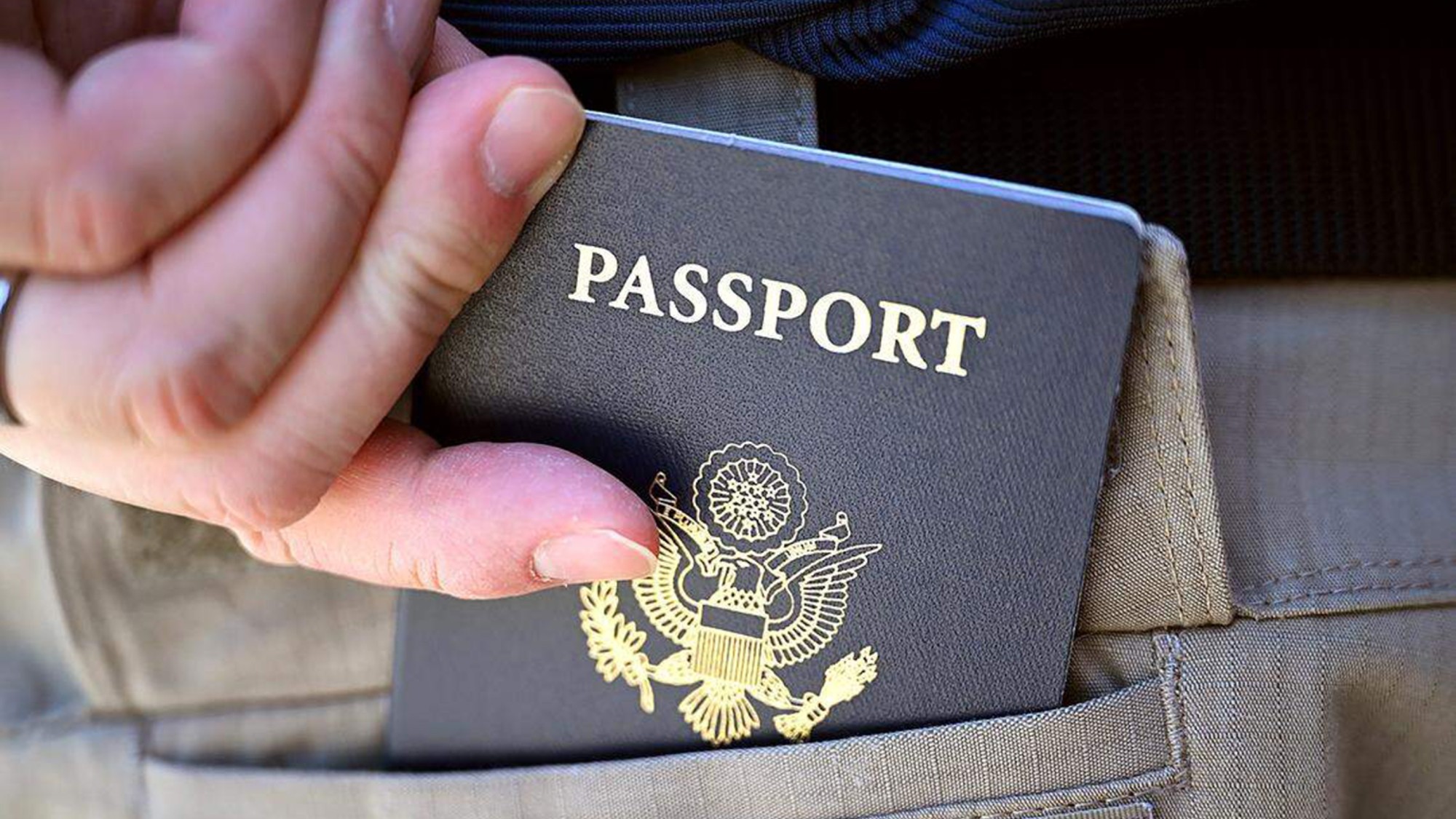 US citizens are carrying passports amid ICE fears
US citizens are carrying passports amid ICE fearsThe Explainer ‘You do what you have to do to avoid problems,’ one person told The Guardian
-
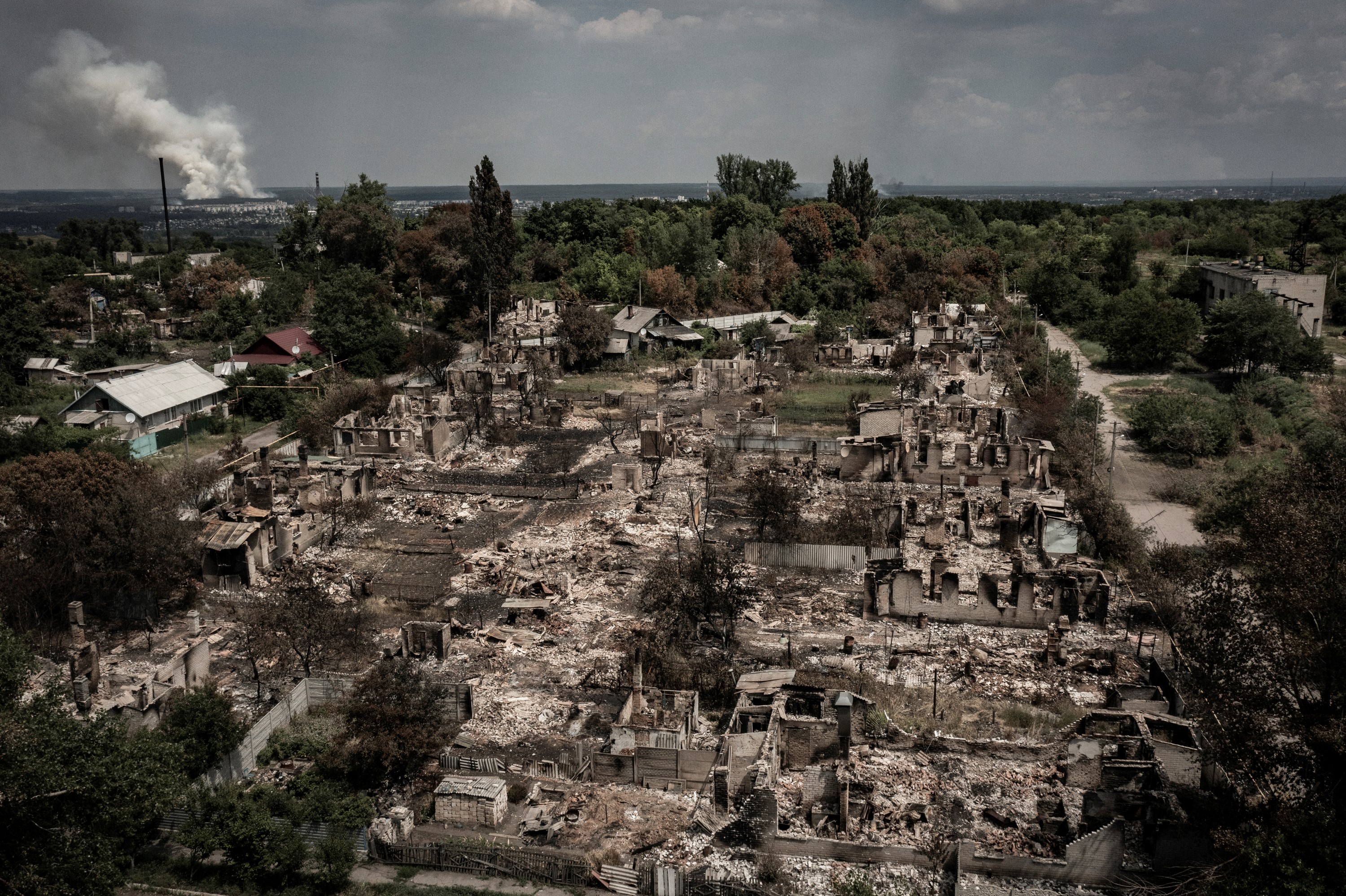 All roads to Ukraine-Russia peace run through Donetsk
All roads to Ukraine-Russia peace run through DonetskIN THE SPOTLIGHT Volodymyr Zelenskyy is floating a major concession on one of the thorniest issues in the complex negotiations between Ukraine and Russia
-
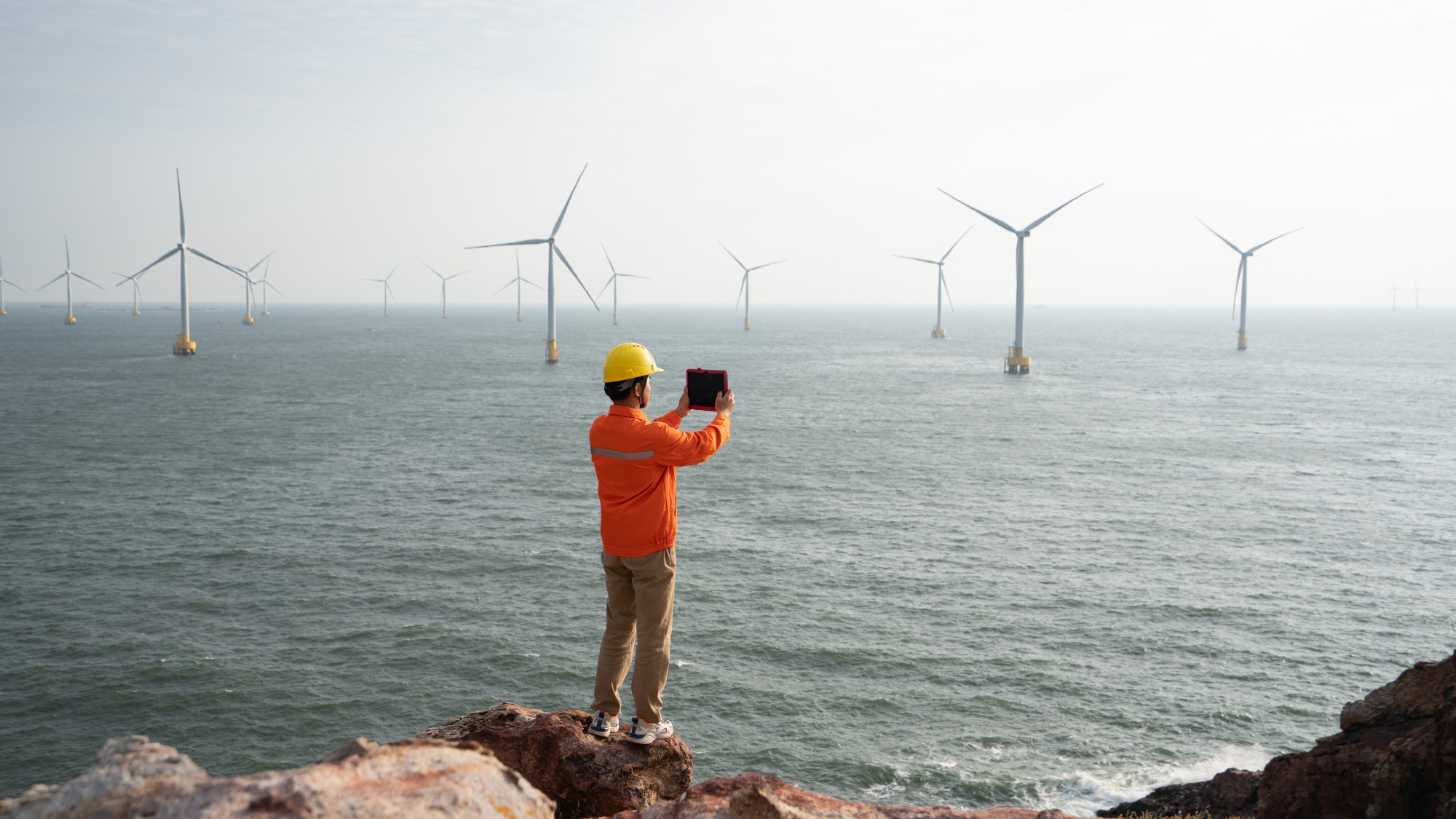 Why is Trump killing off clean energy?
Why is Trump killing off clean energy?Today's Big Question The president halts offshore wind farm construction
-
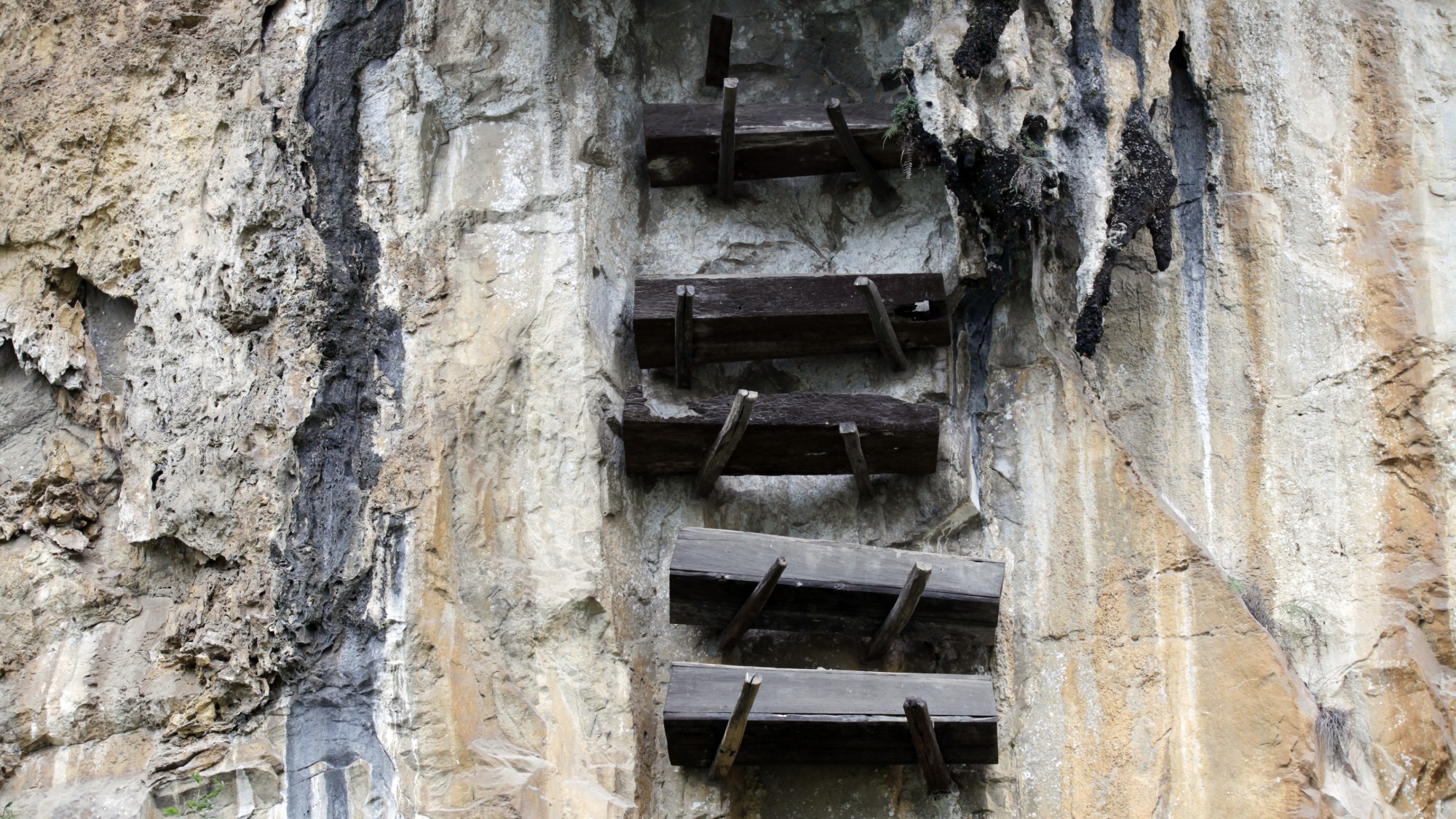 The curious history of hanging coffins
The curious history of hanging coffinsUnder The Radar Ancient societies in southern China pegged coffins into high cliffsides in burial ritual linked to good fortune
-
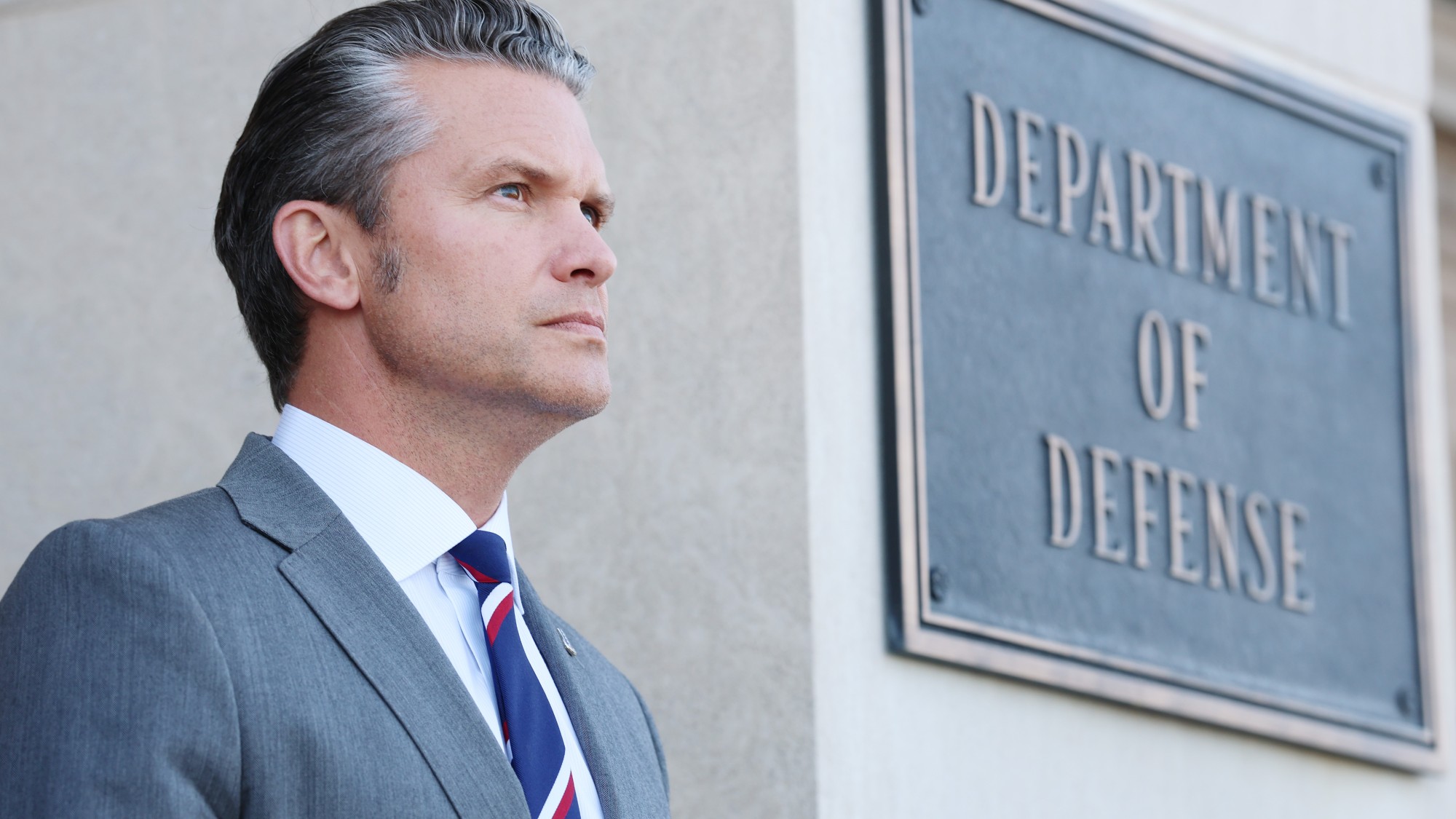 How the War Department became the Department of Defense – and back again
How the War Department became the Department of Defense – and back againIn Depth In 1947 President Harry Truman restructured the US military establishment, breaking with naming tradition
-
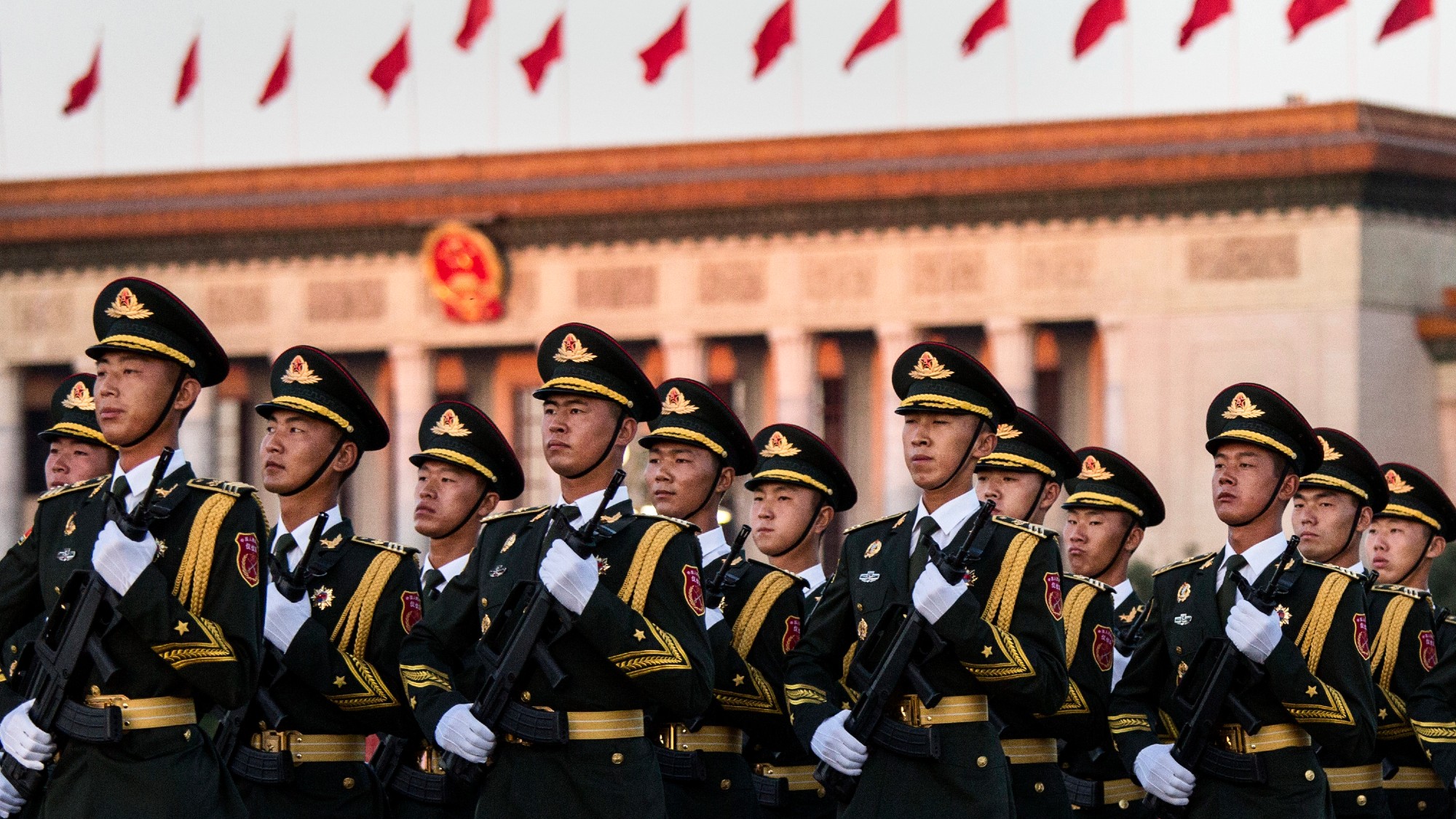 How China rewrote the history of its WWII victory
How China rewrote the history of its WWII victoryIn Depth Though the nationalist government led China to victory in 1945, this is largely overlooked in modern Chinese commemorations
-
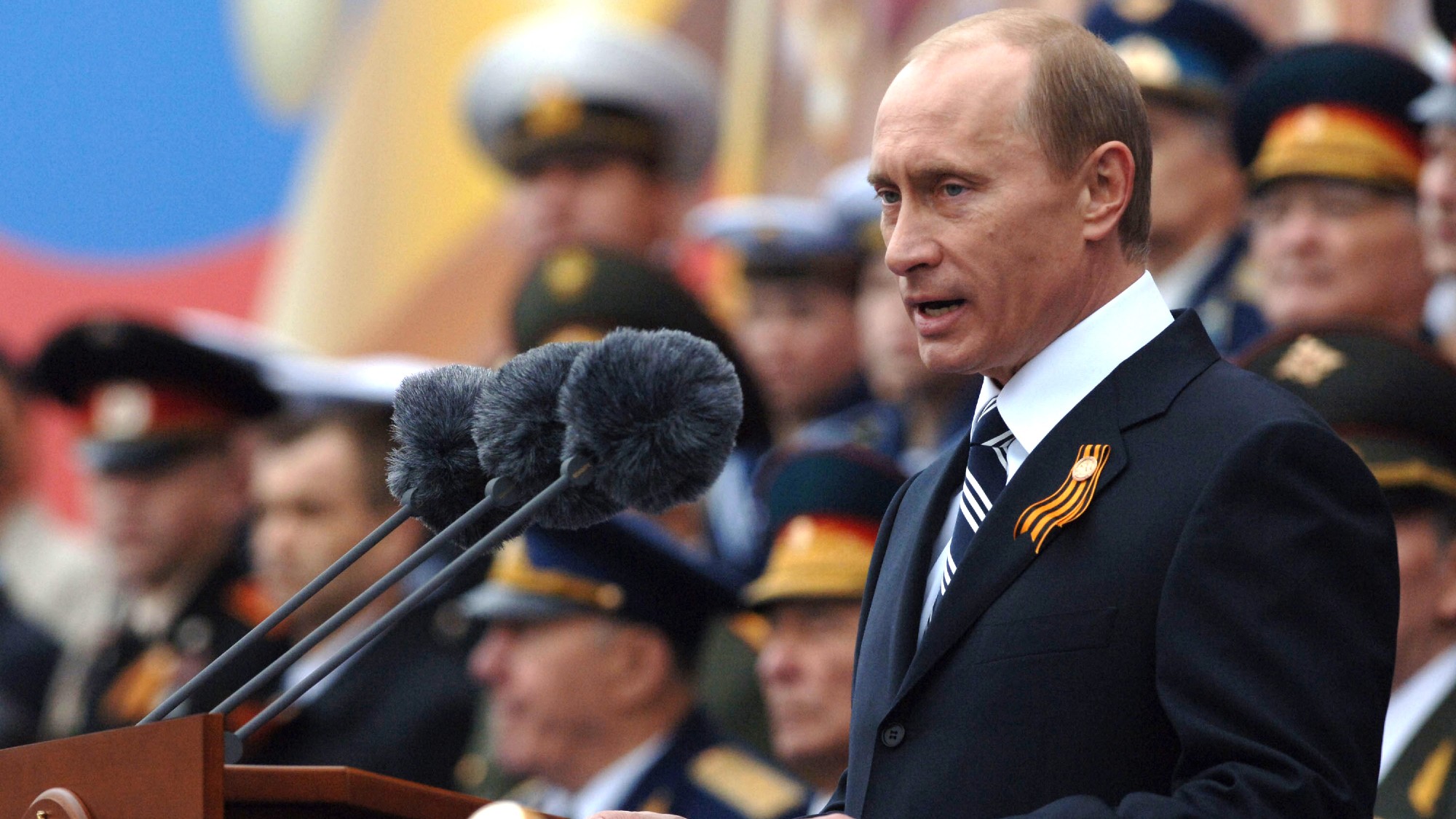 How Putin misunderstood his past victories
How Putin misunderstood his past victoriesIn Depth Though Vladimir Putin has led Russia to a number of grisly military triumphs, they may have misled him when planning the invasion of Ukraine
-
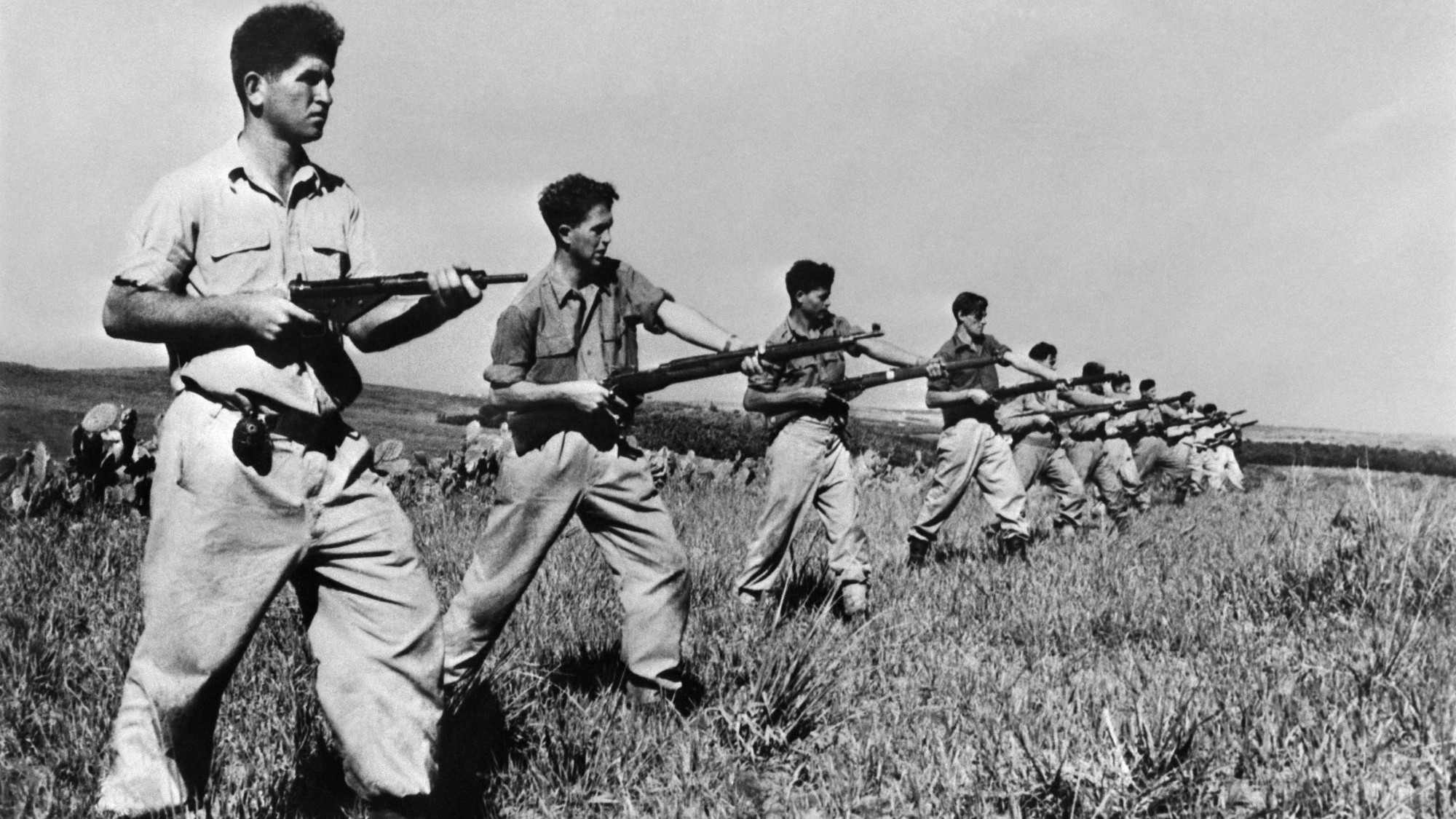 The origins of the IDF
The origins of the IDFIn Depth The IDF was formed by uniting Zionist paramilitary groups, WWII veterans and Holocaust survivors
-
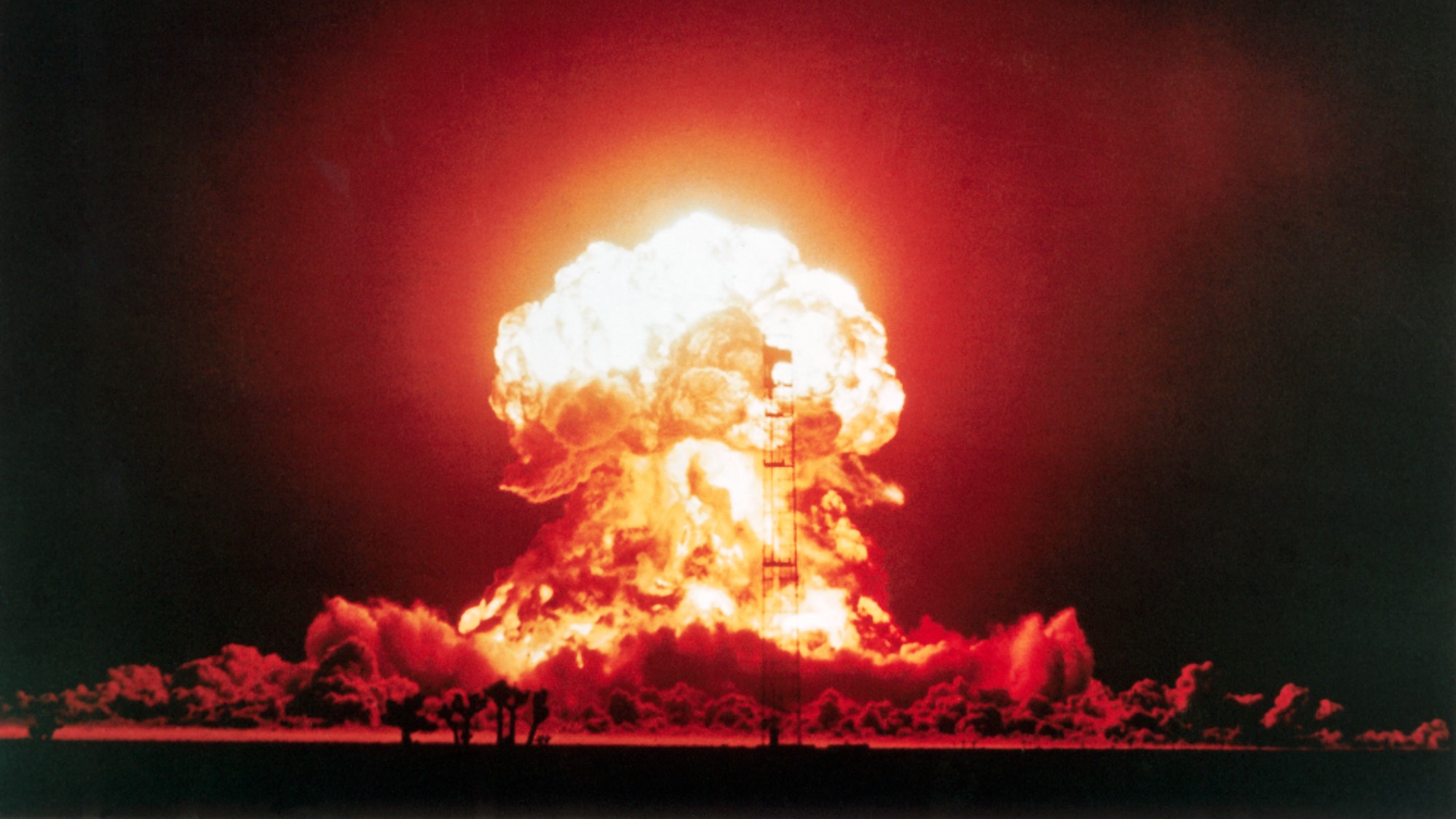 Mutually Assured Destruction: Cold War origins of nuclear Armageddon
Mutually Assured Destruction: Cold War origins of nuclear ArmageddonIn Depth After the US and Soviet Union became capable of Mutually Assured Destruction, safeguards were put in place to prevent World War Three
-
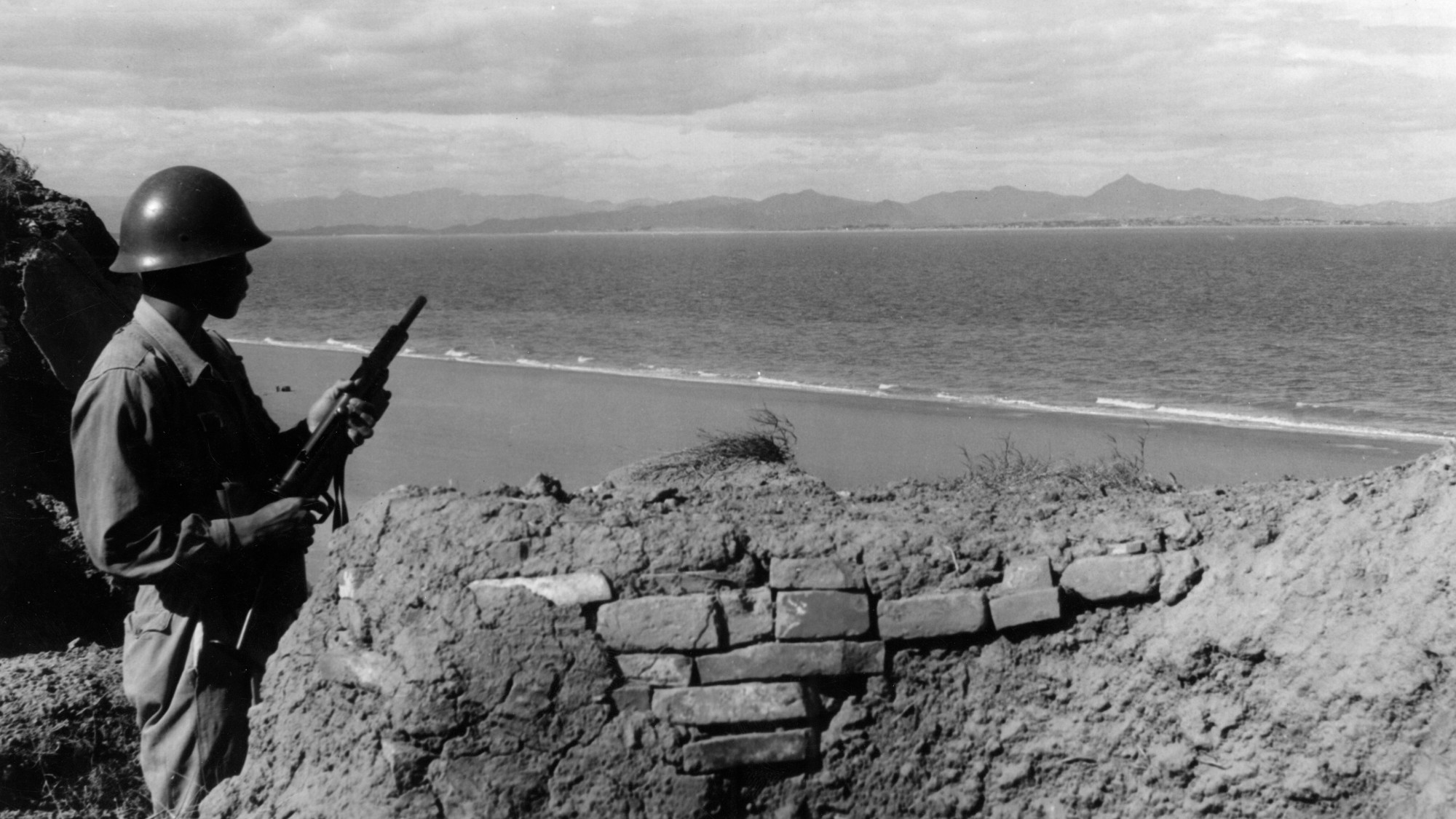 Origins of the Taiwan Strait crisis
Origins of the Taiwan Strait crisisIn Depth For over 75 years, the Republic and People’s Republic of China have confronted each other across the Taiwan Strait, a highly contested sea passage separating the two nations
-
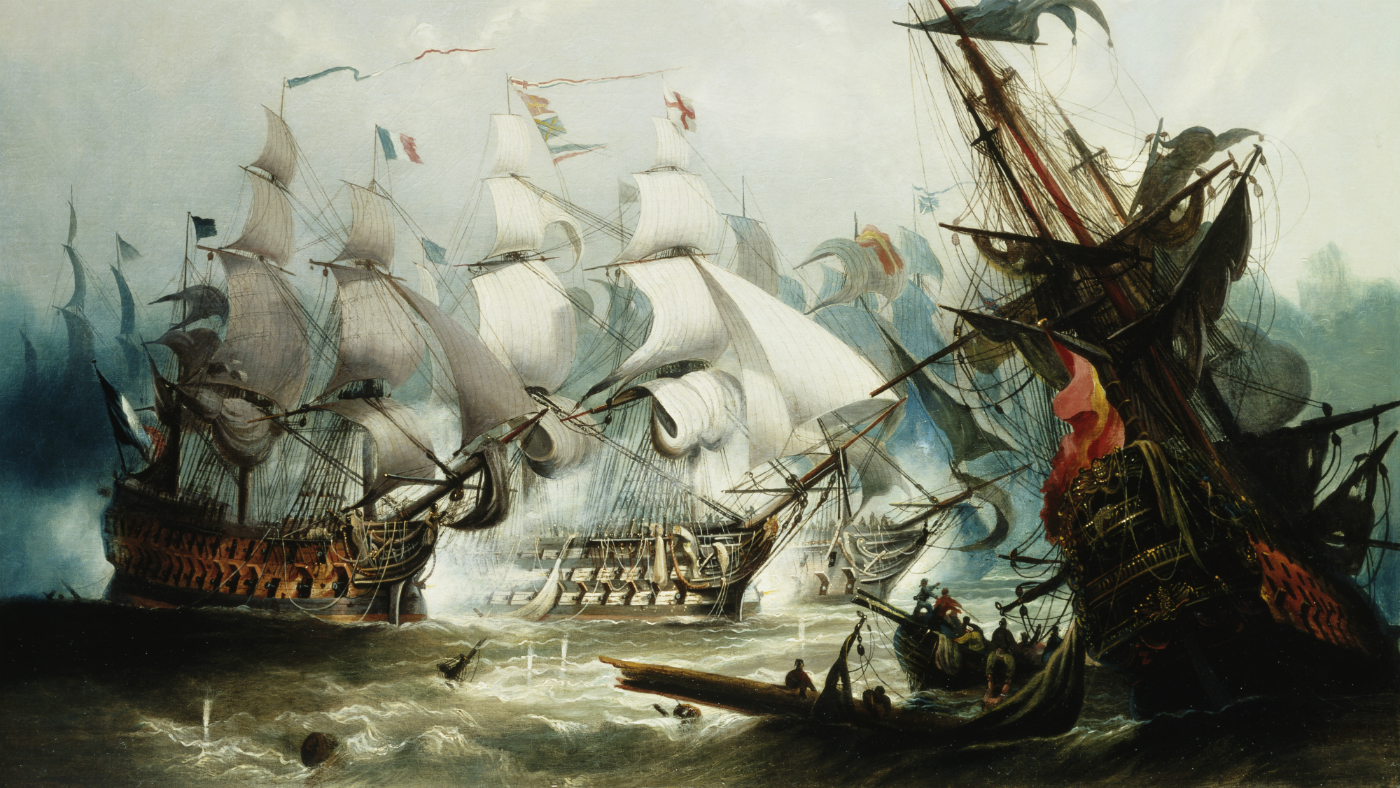 What happened at the Battle of Trafalgar?
What happened at the Battle of Trafalgar?In Depth Monday marks the 214th anniversary of Britain’s most famous naval victory